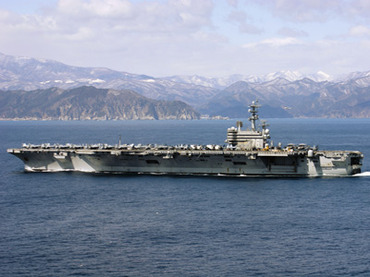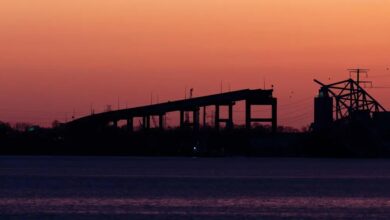
Beijing / NationalTurk – China stated on Monday a US military decision to alter the location of its naval fleet’s bulk to the Pacific by 2020 was ‘ untimely ‘. China also warned US to respect its interests in the South China Sea region where China’s ambitions with its fast-growing Chinese Navy has made China’s neighbors to look for another power to counterbalance the rising Chinese power, what they obviously regard as a threat.
The reason for the conflict is a number of territorial disputes over islands in the South China Sea that China has with many countries, including claims from Taiwan, Vietnam, Malaysia, Singapore, Brunei and the Philippines.
China ‘s increasing stance in the Pacific sets US into motion
Beijing government has been criticised for taking an increasingly assertive stance in the Pacific region – particularly in the South China Sea which it claims almost entirely as its own, in conflict with other nearby countries regarding them inferior. Japan’s Parliamentary Senior Vice-Minister of Defense Shu Watanabe also expressed concern over China’s massive spending on defence and the Chinese Navy stating the lack of transparency in the budget posed a ‘ threat ‘ to Japanese government.
China’s military budget raised to a whopping 11.2 % year on year to $106 billion this year, a jump0 that has caused unease around the region and especially in Japan and now US is taking the matter in its own hands.
Chinese Foreign Ministry spokesperson Liu Weimin stated that the Asia-Pacific is the region where Chinese and the US interests overlap the most, so China expects Washington to play ‘ a constructive role in the region.’
‘ We also hope that the United States will respect the interests and concerns of all sides in the Asia-Pacific, including China,’ ‘We welcome the United States to play a constructive role in the Asia Pacific region,’ Chinese diplomat Liu said. This statement has become the first official reaction from Beijing administration to United States of America’s new plans for the South-Pacific region voiced earlier.
‘ All parties should make efforts to safeguard and promote peace, stability and development in the Asia Pacific,’ foreign ministry spokesman Liu Weimin told reporters in response to a question on the US declaration.
‘ The practice of strengthening military deployment and alliances to give prominence to a military and security agenda is untimely.’
US Defense Secretary Panetta on US-China relations : No Illusions
On Saturday the US Secretary of Defense Leon Panetta revealed Pentagon’s plans to reposition its naval power so that up to 60 % of its warships would be deployed in the Asia-Pacific by the end of the decade from the current 50 % now. The decision to deploy more ships to the Pacific Ocean and to expand defence partnerships in the region – declared by Pentagon chief Leon Panetta Saturday – reflects US concerns over China’s rising economic and military might.
Attending a security conference in Singapore US defense secretary Leon Panetta delivered a speech about the US-China relations. He noted neither side has illusion about the complexity of these relations.
‘ US and China both are aware of the differences we have, we both understand the conflicts we have, but we also both understand that there really is no other alternative but for both of us to engage and to improve our communications and to improve our (military) relationship,’ Leon Panetta delivered.
Panetta stated that ‘ by 2020, the US Navy will re-posture its forces from today’s roughly 50/50 percent split between the Pacific and the Atlantic to about a 60/40 split between those oceans.’ ‘ That will include six aircraft carriers in the Pacific region, a majority of our cruisers, destroyers, littoral combat ships, and submarines.’
The US Defense Secretary also attempted to chasten Chinese concerns, noting ‘ US’ effort to renew and intensify the involvement in Asia is fully compatible… with the development and growth of China. Indeed, increased US involvement in this region will benefit China as it advances our shared security and prosperity for the future.’
While in Hanoi, Panetta made a sensational statement, asking for permission so that Vietnamese ports could be used by the US Navy. The last time the Americans used naval facilities in the country was during the Vietnam War.
The Kamran deepwater port Panetta was specifically talking about was also used by the Soviet/Russian Navy from 1979 till 2001. The base was shut down due to economic reasons. Hanoi has said more than once it is ready to welcome a Russian base of supply back to Kamran. The United States also plans to expand military exercises in the Pacific and to conduct more port visits over a wider area extending to the Indian Ocean.
While Moscow is in deep thought about the proposal Washington is apparently trying to take the initiative and make a proposal to Hanoi, a move that might aggravate its relations with Beijing even more.
Nevertheless, China has been extremely accurate commenting on the issue. Beijing insists that all sides should strive to preserve and promote regional peace, stability and development.
‘ The approach of artificially stressing military security, enhancing military deployments and strengthening military alliances is out of keeping with the times,’ Chinese diplomat answered a question on the announced US plans.
South China Sea is the major source of conflicy as China gets powerful
‘ Washington has been consistent in making these policies since the Obama administration adopted the ‘return to Asia’ policy,’ confirmed a professor at the City University of Hong Kong, Pak Nung Wong, to RT. “The South China Sea is a very important strategic location connecting the oil and other commercial shipping routes from the Middle East and East Asia.”
“The South China Sea is a major irritant between China and South Asian countries (because of the territorial claims). These countries would like to invite the US into the arena so that they could have more bargaining chips against China.”
As of now the US Navy fleet consist of 282 ships, evenly shared between east and west coasts of the country spread at Pacific and Atlantic. Within the next 2 years the number of ships will fall to 276 due to decommissioning. Still, the Pentagon estimates to have 300 warships by the end of this decade according to a 30-year projection plan released in March 2012.
Among these ships are 11 aircraft carriers. Six of them are deployed to the Pacific, but the USS Enterprise is going to be decommissioned in 2013. In 2015 the former admiral ship of US Navy will be replaced with the USS Gerald R. Ford which is going to be the lead ship of her class of United States Navy supercarriers.
[adrotate banner=”42″]
